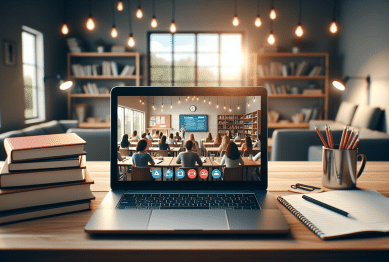Explore how remote learning is transforming education and society for millions of students every day. Discover practical strategies, common challenges, tools, and proven solutions to help make online learning effective, engaging, and accessible for different needs.
Why Remote Learning Matters in Today’s World
Remote learning, once a supplemental option, has evolved into a mainstay for many educational institutions across the globe. With flexible structures and digital platforms, millions of learners now attend classes from anywhere with an internet connection. The rise of virtual education offers opportunities for self-paced study, customized learning experiences, and expanded access to niche subjects that might not be available locally. This approach helps break down barriers, making higher education or career training more accessible to those juggling work, family responsibilities, or living in remote rural areas. For some, it’s the only viable pathway to continue education while facing life’s demands.
The shift to remote formats is not without its challenges. Digital equity—ensuring each student has access to reliable technology and high-speed internet—is a top concern discussed by education experts and policymakers alike. Many public and private organizations focus on closing this gap by offering devices, connectivity support, or community Wi-Fi solutions. Still, disparities remain, highlighting the need for comprehensive strategies that address socioeconomic and geographic divides. Considering education as a societal right, the conversation around remote learning becomes even more critical. The impact of digital access can be seen in student engagement, performance, and future opportunities.
Beyond access, remote education shifts how teachers, students, and families interact. In a digital classroom, new skills—like self-motivation, time management, and digital communication—become just as important as academic content. For some learners, the virtual model supports greater autonomy and reduces anxiety often found in traditional classrooms. But others may struggle with isolation or lack of structure. Understanding how different personalities and learning styles adapt to remote formats can inform better educational design and more supportive teacher-student relationships.
Key Tools and Platforms Empowering Remote Learners
Modern remote learning depends on a network of powerful digital platforms. Learning management systems like Canvas, Google Classroom, and Moodle allow educators to organize resources, create assignments, and interact with students regardless of their location. Live video platforms—Zoom, Microsoft Teams, and Webex—facilitate real-time discussions and lectures. These tools support synchronous learning, mimicking the flow of in-person classes while opening the door to global guest speakers or collaborative projects with peers worldwide. For many, the convenience of accessing resources from any device increases flexibility and engagement.
Self-directed learners often lean on platforms offering asynchronous options. Services like Coursera or Khan Academy provide recorded lectures, reading material, and interactive quizzes students can access anytime. This structure offers learners more control over their schedule and allows them to revisit lessons for mastery, a feature especially helpful for students balancing work or family commitments. Interactive applications such as Padlet, Flipgrid, and Quizlet encourage participation through social posts, collaborative boards, and gamified quizzes. The combination of these resources fosters individualized experiences and ongoing engagement.
Accessible design and universal learning tools are crucial for remote classrooms. Features like live captions, screen reader compatibility, and adjustable font sizes help make online materials usable for individuals with disabilities. Integrating adaptive learning software tailors assignments or supports to each student’s performance, bridging gaps before they widen. As more programs recognize diverse needs, equity in remote learning becomes an achievable goal, strengthening the overall impact of virtual classrooms on education and society.
The Biggest Challenges and Solutions for Virtual Classrooms
Transitioning to remote learning is not as simple as moving lessons online. One major challenge is maintaining student engagement without the cues and energy of a physical classroom. Studies show that attention spans may wane more quickly during virtual sessions, requiring innovative teaching methods, frequent check-ins, and interactive content to keep learners involved. Strategies such as ‘flipped classrooms’—where students watch lectures ahead of time and use virtual class for discussion—can boost participation and deepen understanding, turning passive learning into an active, collaborative process.
Another hurdle is isolation. In-person schools naturally foster a sense of community through group activities, break times, and social events. Virtual environments, by contrast, may leave students feeling alone or disconnected. To address this, educators are introducing social elements into online curricula—virtual clubs, group projects, peer mentoring, or even casual ‘coffee hour’ meetups. These intentional efforts can help build a classroom culture, nurture social skills, and give learners a sense of belonging even from a distance. For younger students, parental involvement often becomes more critical in supporting motivation and routine.
Technical setbacks can derail even the most carefully planned lessons. Unreliable internet or lack of technical knowledge can frustrate both students and teachers. Many institutions invest in IT support, clear user guides, and flexible submission policies to reduce tech-related obstacles. Some public initiatives even provide equipment grants or digital literacy programs, recognizing that upskilling families and educators is essential for remote learning to succeed. Building resilience around technology is as important as mastery of the core curriculum, ensuring all learners can thrive in the digital era.
How Remote Learning Supports Lifelong Education
Remote learning is not only for school-age children or college students. Adults seeking professional development, career pivots, or personal enrichment also benefit from online courses, virtual workshops, or micro-credentials offered by universities and organizations. The flexibility of remote options makes higher education and skills training accessible for individuals with busy schedules, family obligations, or jobs. This democratization of learning equips more people to adapt to changing job landscapes and encourages a culture of curiosity and self-improvement throughout life. Upskilling has become a vital part of workforce evolution, especially as technology advances.
Learners can pursue certificates, degrees, or specialized skills from reputable institutions around the world. Platforms such as edX, FutureLearn, and LinkedIn Learning deliver content from top universities and companies, often with the option to learn at one’s own pace. For those facing career transitions, these opportunities provide a bridge to new fields without the logistical barriers of commuting or rigid class schedules. The ability to customize education pathways means that individuals can rapidly build expertise in high-demand sectors, staying competitive in the modern workforce.
Continuing education extends beyond formal coursework. Access to digital resources—webinars, podcasts, discussion forums, and public libraries—allows learners to explore topics of interest at no cost. This abundance of knowledge empowers individuals and communities alike, supporting civic engagement, financial literacy, and health education. Embracing lifelong learning contributes to personal well-being and societal resilience, helping people adapt to continual shifts in technology, employment, and global interconnectedness.
Remote Learning, Equity, and the Future of Education
The future of education depends on our ability to create equitable remote learning experiences for all. Policies and investments that improve digital infrastructure, provide affordable devices, and support teachers in mastering online instruction are crucial. As countries and school systems pilot different models, collecting data and sharing insights will help scale effective practices. Building partnerships between schools, non-profits, libraries, and technology providers can close persistent divides and create a more inclusive learning environment for everyone.
Personalization is another major shift. Adaptive learning software analyzes student progress and customizes materials to fit their pace and style. Artificial intelligence and data analytics can detect learning gaps early and propose targeted interventions before students fall behind. These innovations show promise for boosting outcomes, particularly for those at risk of disengagement or failure in traditional settings. Yet, ethical considerations—like data privacy and equitable access—must stay at the forefront of these developments.
Remote learning also poses important questions for educators and society: What skills are essential for the next generation? How can digital curricula foster critical thinking, collaboration, and creativity? By encouraging flexibility and innovation, remote learning models may reimagine education not as a one-size-fits-all system, but as a responsive, lifelong journey. The future points toward integrated approaches that blend physical and virtual classrooms, creating new opportunities for students and communities worldwide.
Parental Roles and Community Support in Home-Based Learning
Parents and guardians play an increasing role in remote learning, especially for younger students. Home-based education requires adults to help structure routines, support technology use, and motivate children to stay engaged with their assignments. For many families, this transition means rebalancing work and caregiving responsibilities, sometimes leading to additional stress or time constraints. Schools and teachers can support parents by providing training on technology platforms, offering regular updates about student progress, and maintaining open lines of communication.
Beyond the home, communities can bolster remote learners through after-school programs, learning pods, and library-based tutoring sessions. Local organizations, nonprofits, and volunteers often step in to fill gaps by providing meals, academic coaching, or safe study spaces for students whose homes are not conducive to quiet learning. Such collaborations enhance equity and help mitigate social isolation that may occur with remote models. When families and communities unite, learners receive broader support to address academic and emotional needs.
Remote education can be both liberating and challenging. Successes are often rooted in flexible approaches, clear communication, and creative partnerships. As schools, parents, and communities continue to adapt, sharing what works becomes vital. Collective efforts shape an environment where every student, regardless of background, can thrive in a digital world.
References
1. U.S. Department of Education. (n.d.). Reimagining the Role of Technology in Education. Retrieved from https://tech.ed.gov/files/2017/01/NETP17.pdf
2. World Bank. (n.d.). Remote Learning and COVID-19. Retrieved from https://www.worldbank.org/en/topic/edutech/brief/edtech-covid-19
3. Harvard University. (n.d.). Supporting Students’ Social, Emotional, and Mental Health Needs. Retrieved from https://www.gse.harvard.edu/news/uk/20/03/supporting-students
4. UNESCO. (n.d.). Distance Learning Solutions. Retrieved from https://en.unesco.org/covid19/educationresponse/solutions
5. National Center for Learning Disabilities. (n.d.). Equity in Remote Learning. Retrieved from https://www.ncld.org/news/policy-and-advocacy/equity-in-remote-learning
6. National Education Association. (n.d.). Parent Guide to Remote Learning. Retrieved from https://www.nea.org/resource-library/parent-guide-remote-learning









